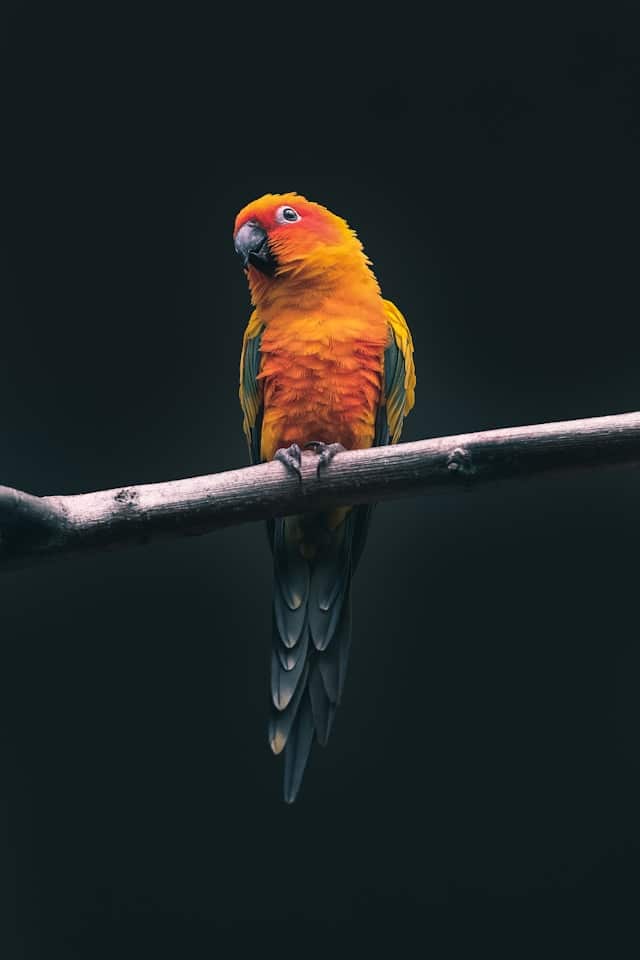Brimming with vibrancy and intelligence, parrots are enchanting birds that exhibit an astonishing range of behaviors and abilities. Among all bird species, the African Grey Parrot stands out for its remarkable cognitive prowess and emotional intelligence. Training these parrots can be a rewarding experience, both for the avian and human participants. One such task, teaching these birds to identify colors, can stimulate their cognitive faculties and enhance their overall health. This article offers a deep dive into the specific techniques you might use to help your feathered friend understand the spectrum of colors, with a focus on the African Grey Parrot.
Understanding the African Grey Parrot
The African Grey Parrot is a standout species among other birds due to its proven cognitive abilities. They are known for their impressive lifespan, which can extend up to 50 years with proper care. Research conducted by Dr. Irene Pepperberg, particularly with a parrot named Alex, revealed that these birds can understand concepts on par with a five-year-old human child. This section provides an overview of the African Grey Parrot’s cognitive abilities and inherent characteristics, which will help you approach the training process with a deeper understanding.
En parallèle : How to Design an Age-Appropriate Exercise Routine for a Senior Bulldog?
African Grey Parrots are among the most intelligent of bird species. They possess an exceptional ability to mimic human speech, which goes beyond mere repetition. These birds understand the meaning behind words and the context in which to use them. Furthermore, they can understand numerical concepts, simple arithmetic, and even identify different colors and shapes.
Therefore, teaching an African Grey Parrot to identify colors isn’t outside its cognitive capacity. On the contrary, such exercises can help stimulate the bird’s intellect and prevent boredom, a common issue among captive birds that can lead to destructive behavior and poor health.
Lire également : What’s the Best Way to Introduce Clicker Training to a Shy Dog?
Preparing for the Training
A successful training program for a parrot revolves around patience, consistency, and positive reinforcement. Before you embark on this colorful journey with your pet, it’s vital to set up an appropriate environment and gather the necessary resources. This section will guide you through the preparatory steps needed to kickstart this cognitive enhancement project.
Firstly, ensure that the bird is comfortable in its surroundings. African Grey Parrots are sensitive creatures and can be easily stressed by sudden changes in their environment. Maintain a peaceful, quiet space for the training sessions to prevent any distractions that could hinder the learning process.
Next, gather a variety of objects in different colors. You can use toys, blocks, or even fruits. Make sure each item is distinctively colored, easy to handle, and safe for the bird. The purpose is to familiarize the parrot with a spectrum of colors.
Initiating the Color Recognition Training
The actual training process begins by introducing one color at a time. This gradual approach will ensure the bird doesn’t feel overwhelmed and can slowly but surely grasp the concept of color differentiation. In this section, we’ll outline the initial steps of the training process.
Begin by choosing one colored object. For instance, start with a red block and keep repeating the word ‘red’ while showing the block to the parrot. It’s crucial to make sure that the bird is paying attention and is engaged in the task. The key to success in this step lies in repetition and consistency.
Advancing the Training Process
Once your parrot can correctly identify the first color, you can proceed to introduce a new color. This stage of the training aims to teach the bird to distinguish between different colors. Here, we’ll guide you through the advanced steps of the training process.
Introduce the second color in the same manner as the first one. For instance, if the second color is ‘blue’, show the blue object to the parrot and keep repeating ‘blue’. Once the parrot starts to identify the second color, you can test its understanding by mixing the two colored objects.
Monitoring Progress and Reinforcing Learning
Observation and reinforcement play a critical role in the bird’s learning journey. Regularly monitor the progress of your African Grey Parrot’s color recognition ability and reinforce successful tasks with rewards. This section offers tips on how to effectively monitor progress and reinforce learning.
When testing the parrot’s understanding of the two colors, ask the bird to pick a specific color from the mix. If the bird correctly identifies the color, give a reward such as a favorite treat. This positive reinforcement will help the parrot associate successful tasks with rewards, motivating it to continue learning.
While progress may be slow at first, remember that patience is key. Over time, with consistent practice and positive reinforcement, your African Grey Parrot will start to identify different colors, adding a colorful layer to its cognitive abilities.
Problem Solving in African Greys
The cognitive abilities of African Grey Parrots go beyond color recognition. These birds demonstrate a high level of problem-solving skills, making them one of the most intelligent bird species. Ensuring regular mental stimulation for these birds is crucial. In this section, we will delve into the problem-solving faculties of these parrots and how these can be harnessed.
African Greys are not only capable of learning and identifying colors, but they also exhibit problem-solving skills that set them apart from other parrot species. These parrots have been observed to solve complex puzzles, identify patterns, and even comprehend cause and effect. The African Grey’s capacity for problem-solving is a testament to its advanced cognitive abilities.
Regular mental stimulation, including color recognition training and puzzle-solving exercises, is essential for the African Grey’s overall well-being. Boredom and lack of mental engagement can lead to issues such as feather plucking, a common sign of stress in birds. Incorporating problem-solving exercises into your parrot’s routine can help prevent these issues and contribute to their health.
Veterinary medicine also recognizes the importance of mental stimulation for birds. As an avian veterinarian would affirm, both physical and mental health are vital for a bird’s long-term wellbeing. Therefore, engaging your African Grey in problem-solving activities is not just a fun pastime, but a key aspect of maintaining its health.
Conclusion: The Importance of Cognitive Enrichment in African Greys
In conclusion, cognitive enrichment plays a central role in the health and well-being of African Grey Parrots. These birds, native to the psittacus erithacus and time zone where they naturally thrive, possess advanced cognitive abilities comparable to those of a five-year-old human child.
Teaching them to identify colors or training them on problem-solving tasks, not only serves as an excellent bonding exercise but also contributes positively to their overall health. It is important to remember that mental stimulation, patience, consistency and positive reinforcement are key elements in the successful training of these intelligent birds.
Incorporating such activities into your African Grey’s routine can help alleviate common problems like feather plucking, which is often a sign of stress or boredom. Moreover, it offers the bird a richer, more stimulating life, enhancing its emotional well-being in captivity.
African Grey Parrots, like the goffin cockatoos, are a testament to the intelligence found in the bird kingdom. With the right approach, your African Grey can exhibit a spectrum of behaviors and abilities, from vocal learning to color recognition. While it may take time and dedication, the rewards of training and bonding with your Grey Parrot are immensely satisfying. Every step of progress they make is a testament to their extraordinary intelligence and to the efforts invested in their cognitive enrichment.






